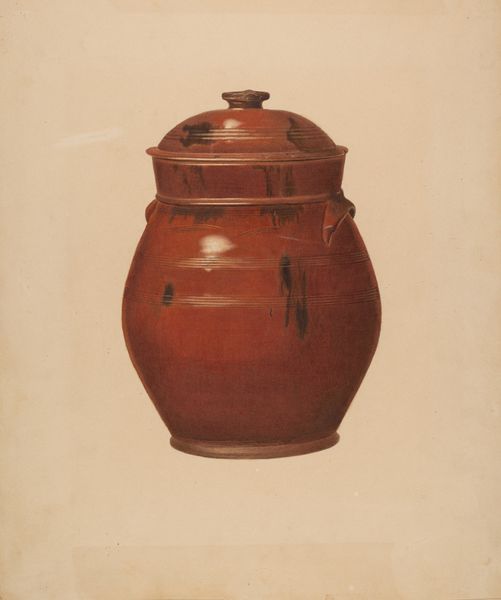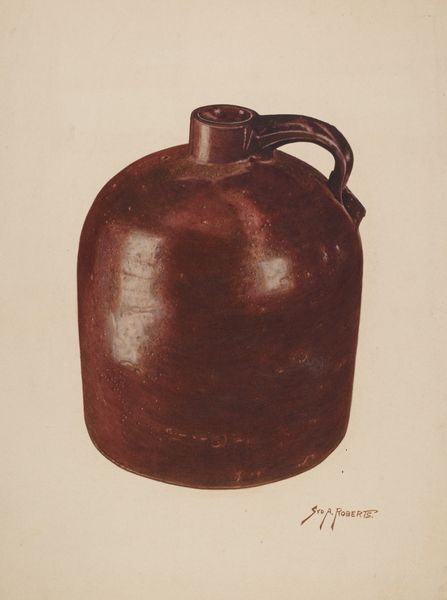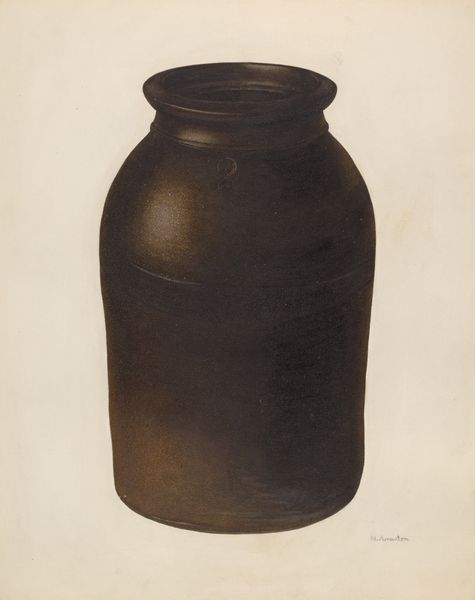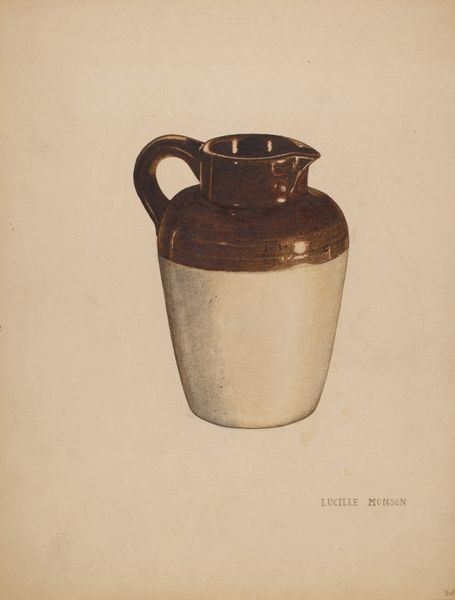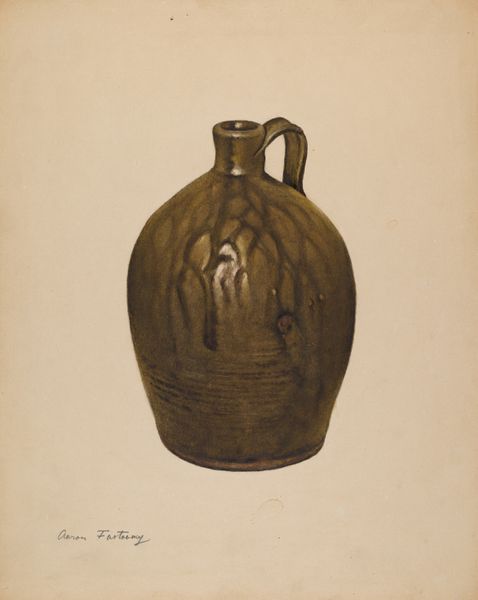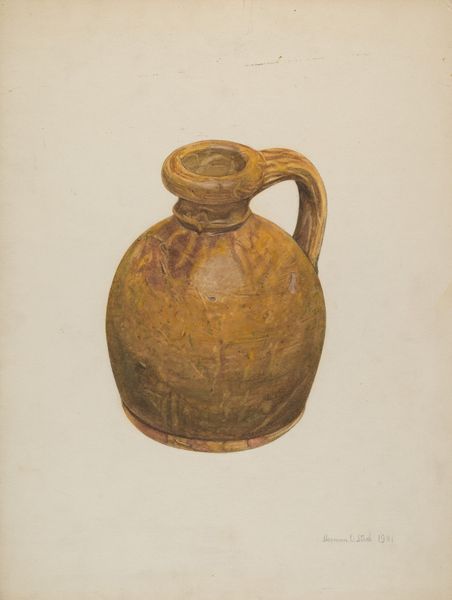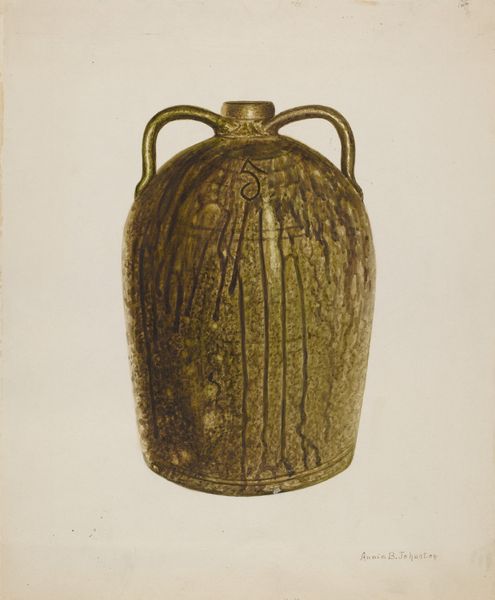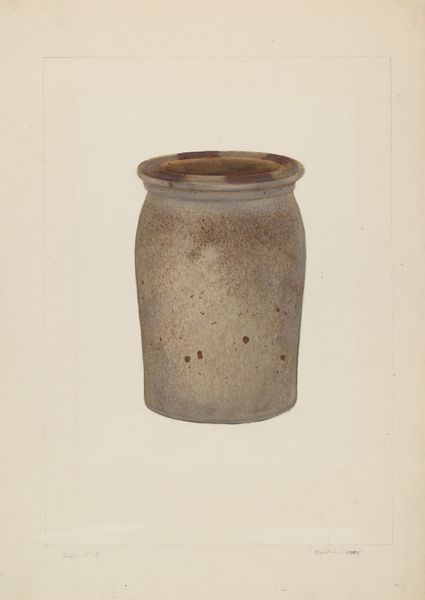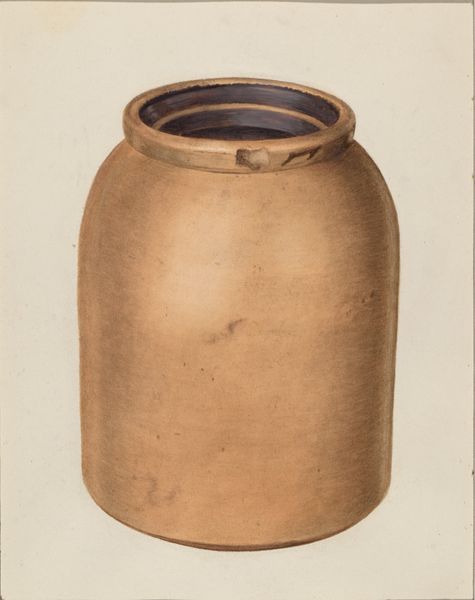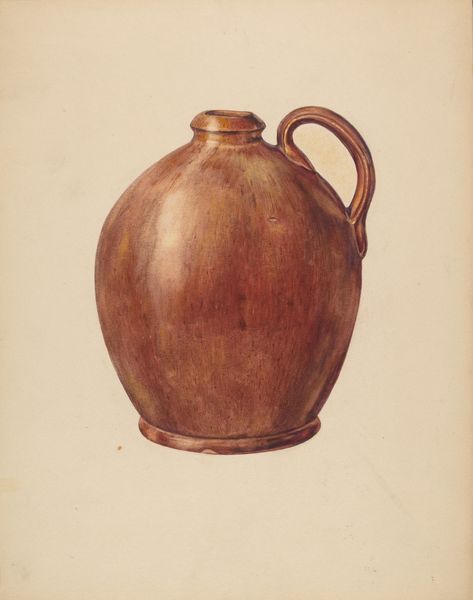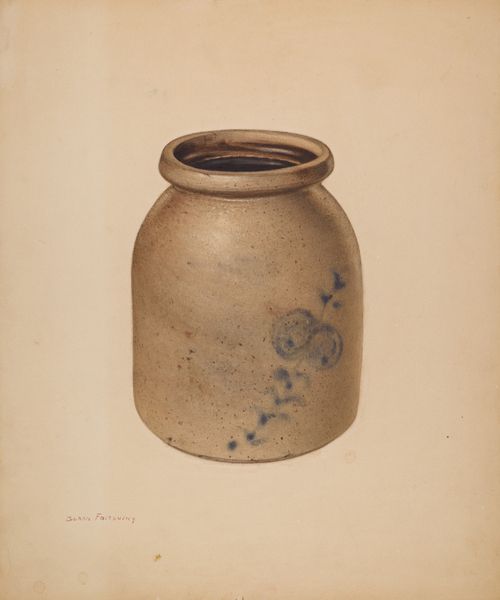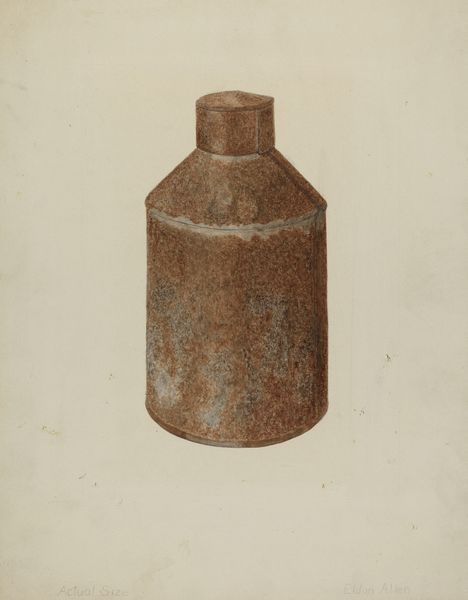
drawing, watercolor
#
drawing
#
charcoal drawing
#
charcoal art
#
watercolor
#
watercolour illustration
#
charcoal
#
watercolor
#
realism
Dimensions: overall: 35.7 x 26.8 cm (14 1/16 x 10 9/16 in.)
Copyright: National Gallery of Art: CC0 1.0
Curator: Here we have Paul Poffinbarger’s "Fruit Jar," created circa 1939. It combines watercolor and charcoal, creating a textured image. What are your initial thoughts? Editor: Immediately, I'm struck by its muted palette. The earthy browns and off-whites evoke a sense of domesticity and perhaps a bygone era, touching upon notions of labor and self-sufficiency prevalent during that period. Curator: The fruit jar is such an ordinary object, isn't it? Yet Poffinbarger elevates it to a symbol, imbuing it with potential narratives of preservation and memory. Fruit jars held not just preserves, but the promise of abundance through hard times. What could it symbolize culturally? Editor: I'd argue it represents resilience during the late Depression era, echoing the ideals and values central to American identity. Consider how this humble jar intersects with labor rights and income inequality, becoming a marker for the silent struggles of working-class families. Curator: And perhaps that's why there is so much cultural power in ordinary objects, such as this fruit jar. They aren't merely containers but representations of lived experiences. And the broken, chipped rim -- doesn't that speak to a resilience despite the daily realities? Editor: Absolutely. It is this visual imperfection and evidence of handling and reuse that suggests continuity. Yet that broken rim, however subtle, introduces complexity, doesn't it? The work's realism only enhances its poignancy. Curator: Precisely. Poffinbarger isn’t romanticizing; the illustration renders the fruit jar without ornamentation. What do we make of the object’s significance today? Does it invite us to reimagine our relationship with such ordinary things? Editor: It makes me think about environmentalism, consumerism, and sustainability – our current dialogue considers how the practices of previous generations offered creative solutions in order to survive economic hardship. By considering Poffinbarger's "Fruit Jar," we invite conversations that can affect our engagement with the present. Curator: A poignant object indeed, and one whose significance lies in both the historical period from which it comes as well as the personal symbolism we bring to it. Editor: I concur entirely. This small watercolor holds such power and provides many pathways to interrogate American histories.
Comments
No comments
Be the first to comment and join the conversation on the ultimate creative platform.

